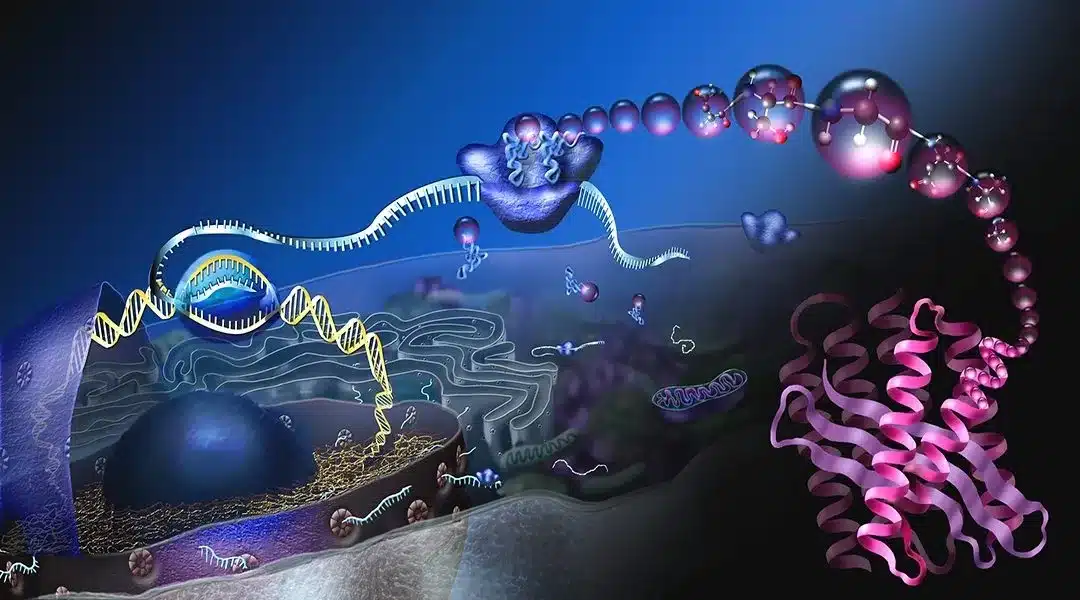About Ribosomes
- Ribosomes are non-membrane-bound cell organelles made of RNA and proteins.
- They are found in both prokaryotic and eukaryotic cells.
- In eukaryotic organisms, ribosomes are found in the cytoplasm, mitochondria, and chloroplast.
- All prokaryotic ribosomes are found free in the cytoplasm of the cell.
- Ribosomal structure and function are strikingly similar in all organisms and organelles.
- They are made of two subunits, the large and the small subunit which comprises ribosomal RNA (rRNA) and proteins.
- Primary Function:
- They are complex molecular machines that make proteins from amino acids in a process called protein synthesis, or translation.
- Every cell needs ribosomes to manufacture proteins.
- The ribosome reads the messenger RNA (mRNA) sequence and translates that genetic code into a specified string of amino acids, which grow into long chains that fold to form proteins.
- The newly formed proteins detach themselves from the ribosome site and migrate to other parts of the cell for use.
What is mRNA?
- mRNA is a type of single-stranded RNA involved in protein synthesis.
- mRNA is made from a DNA template during the process of transcription.
- The role of mRNA is to carry protein information from the DNA in a cell’s nucleus to the cell’s cytoplasm (watery interior), where the protein-making machinery reads the mRNA sequence and translates each three-base codon into its corresponding amino acid in a growing protein chain.
- So, mRNA really is a form of nucleic acid which helps the human genome, which is coded in DNA, to be read by the cellular machinery.
Q1) What is electron microscopy?
Electron microscopy (EM) is a technique for obtaining high resolution images of biological and non-biological specimens. It is used in biomedical research to investigate the detailed structure of tissues, cells, organelles and macromolecular complexes. The high resolution of EM images results from the use of electrons (which have very short wavelengths) as the source of illuminating radiation. Electron microscopy is used in conjunction with a variety of ancillary techniques (e.g. thin sectioning, immuno-labeling, negative staining) to answer specific questions. EM images provide key information on the structural basis of cell function and of cell disease.
Source: Researchers produce 3D model of the ribosome and visualize how it is made
Last updated on December, 2025
→ Check out the latest UPSC Syllabus 2026 here.
→ Join Vajiram & Ravi’s Interview Guidance Programme for expert help to crack your final UPSC stage.
→ UPSC Mains Result 2025 is now out.
→ UPSC Notification 2026 is scheduled to be released on January 14, 2026.
→ UPSC Calendar 2026 is released on 15th May, 2025.
→ The UPSC Vacancy 2025 were released 1129, out of which 979 were for UPSC CSE and remaining 150 are for UPSC IFoS.
→ UPSC Prelims 2026 will be conducted on 24th May, 2026 & UPSC Mains 2026 will be conducted on 21st August 2026.
→ The UPSC Selection Process is of 3 stages-Prelims, Mains and Interview.
→ UPSC Result 2024 is released with latest UPSC Marksheet 2024. Check Now!
→ UPSC Prelims Result 2025 is out now for the CSE held on 25 May 2025.
→ UPSC Toppers List 2024 is released now. Shakti Dubey is UPSC AIR 1 2024 Topper.
→ UPSC Prelims Question Paper 2025 and Unofficial Prelims Answer Key 2025 are available now.
→ UPSC Mains Question Paper 2025 is out for Essay, GS 1, 2, 3 & GS 4.
→ UPSC Mains Indian Language Question Paper 2025 is now out.
→ UPSC Mains Optional Question Paper 2025 is now out.
→ Also check Best IAS Coaching in Delhi

















